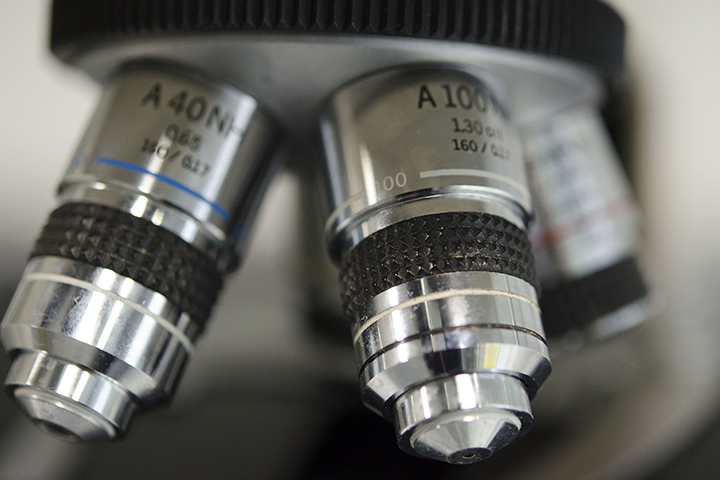Advances in Pancreatic Neuroendocrine Tumor (PNET) Treatments

Apple co-founder Steve Jobs had pancreatic cancer and so did actor Patrick Swayze.
Swayze had the most common form of pancreatic cancer—pancreatic adenocarcinoma, or PDAC. But Jobs had a less common form of pancreatic cancer called a pancreatic neuroendocrine tumor, or PNET. A PNET tumor differs from PDAC in terms of basic biology, treatment options, and survival rates.
More than 90 percent of pancreatic cancers are PDACs; about 5 to 10 percent of the remaining cancers are PNETs, explains gastrointestinal oncologist Diane Reidy-Lagunes, M.D., Chief of the Division of Medical Oncology and Associate Vice President for Oncology Services for DukeHealth, Durham, North Carolina. “Pancreatic adenocarcinoma tends to be faster growing, and is associated with a worse prognosis partly because these tumors have the ability to metastasize very early on so are often diagnosed in later stages,” she adds.
“PNETs tend to grow slower than the PDACs, so patients may have had them for years. Often the tumor is discovered incidentally during an abdominal scan. And it’s clear that patients with PNETs generally live longer even with more advanced disease. Plus, many of our patients are surgical candidates, which is really the only way to cure a PNET,” Reidy-Lagunes continues. “The biology of these two cancers is also very different, partly because we believe they originate from different cells within the pancreas,” she adds. However, she notes, “PNETs can sometimes behave more aggressively and many of our patients will succumb to the disease.”
A PNET Treatment Primer
Treatment is where the two diseases really differ. The backbone of PDAC treatment is chemotherapy. For patients who are surgical candidates, doctors may give chemotherapy before and after surgery. If PDAC is metastatic, chemotherapy, a combined chemotherapy treatment with a targeted agent, or a clinical trial may potentially help control the growth and spread of the disease.
Treatment is very different for PNETs. These tumors are categorized by “differentiation” and “grade,” both of which refer to the rate of rapid division of the cancer cells. “Think of the categories as kind of a dividing line for treatment,” says Reidy-Lagunes, who also serves as professor of medicine at the Duke University College of Medicine. “Well-differentiated and low-grade tumors are slower growing, while poorly differentiated and high-grade tumors are faster growing; the higher-grade tumors are the ones that have the potential to behave more aggressively.
“So, we first figure out if the cancer can be surgically removed. If a PNET is unresectable, we use systemic treatments, including hormone-related treatment, biologic treatment, radioligand therapy, and chemotherapy. For the poorly differentiated neuroendocrine carcinomas, we often use chemotherapy only.” Indeed, several types of treatments are used for well-differentiated PNETs, including surgery, hormone therapy, chemotherapy, targeted therapy, peptide receptor radionuclide therapy (PRRT), and liver-directed therapy.
It’s important to note that PNET treatment “absolutely needs a multidisciplinary team,” Reidy-Lagunes adds. That’s because these tumors are very complex. For example, the tumors may be functional, and secrete hormones that cause a long list of symptoms resulting in an earlier diagnosis. Or they may be nonfunctional, causing few if any symptoms and thus diagnosed much later. “PNETs are rare and there is a lack of biomarkers so there is a diagnostic challenge as well as a treatment challenge,” she notes. “By having the right multidisciplinary team in place, we get different perspectives which can lead to a more accurate diagnosis and better disease management.”
PNET Treatment Strategies
For patients with PNETs, there are a number of different treatment strategies that can be used.
Surgery
The best way to treat PNETs that are contained within the pancreas is through surgery. Many cases can be cured this way. The type of surgical procedure used varies depending on the type, size, and location of the tumor.
Large tumors located in the head, uncinate, or neck of the pancreas often will require the Whipple procedure, while a tumor in the tail or distal body of the pancreas can be removed with a distal pancreatectomy. A procedure called a central pancreatectomy can be considered if the tumor is located within the center of the pancreas, but this procedure carries the risk of a leak of pancreatic fluid, a significant complication. In some cases, when the tumor is small, only the tumor is removed in a procedure called enucleation, which spares all parts of the pancreas.
Treatment before surgery, known as neoadjuvant therapy, is sometimes needed for PNETs; options may include chemotherapy or peptide receptor radionuclide therapy (PRRT). This approach is considered for large pancreatic tumors that are borderline surgically removable (resectable) or in patients who have liver metastases that appear borderline resectable. The goal is to shrink the tumor, potentially making it resectable or improving the chances of successful surgery.
Hormone therapy
Functional PNETS produce hormones; nonfunctional PNETS do not produce hormones. Hormone therapy helps reduce side effects of these tumors.
Hormone therapy can be used when surgery is not possible. This therapy uses somatostatin analogues, such as octreotide or lanreotide, to slow a tumor’s growth. It can also be used to prevent the cancer from spreading and to reduce the level of hormones produced by functional PNETs.
Chemotherapy
Chemotherapy drugs commonly used to treat PNETS include fluorouracil (5-FU) and its prodrug form, capecitabine; temozolomide; and oxaliplatin.
In some cases, two or more of the drugs may be combined. Common combinations include temozolomide with capecitabine, and 5-FU with oxaliplatin.
Targeted therapy
PNETs can be treated with targeted agents that home in on specific features on cancer cells. Belzutifan is a targeted agent for PNETs that are caused by a hereditary syndrome known as von Hippel-Lindau disease, or VHL. Everolimus is another targeted agent that works by inhibiting mTOR (mammalian Target of Rapamycin), a protein that plays a key role in cell growth, division, and immune system function. Another agent called sunitinib prevents the tumor from creating new blood vessels.
The phase III CABINET trial demonstrated that cabozantinib significantly improves progression-free survival in patients with advanced PNETs. This drug was approved by the FDA in March 2025. Cabozantinib is a tyrosine kinase inhibitor that works by blocking the action of several proteins that promote cancer cell growth, division, and survival.
Peptide receptor radionuclide therapy
Peptide receptor radionuclide therapy (PRRT) is used to treat somatostatin-receptor positive PNETs. This type of radiation therapy uses an intravenous delivery of a radioactive drug called lutetium Lu 177 dotatate. This drug delivers radiation by attaching to the tumor directly. It has been particularly useful for patients with well-differentiated, unresectable, or metastatic PNETs that are no longer responding to standard therapies.
Liver-directed therapy
When PNETs spread to the liver, an interventional radiologist can employ a procedure known as embolization. There are a few different types of embolization. Radioembolization requires placing radioactive beads on the tumors. Alternatively, bland embolization uses particles to block off the blood vessels feeding the liver tumors. The goal is to shrink the tumors or eradicate them.
Watch and wait
Some PNETs grow so slowly that the risks of treating may outweigh the risks of not treating for a period of time. In these cases, careful observation can be used as a treatment strategy. This can apply to some tumors contained within the pancreas as well some cases of metastatic disease.
Ongoing Research
There are numerous trials investigating different PNET treatment approaches. There are newer types of peptide receptor radiotherapy that are being tested in clinical trials along with new ways to image neuroendocrine cancers. Researchers are focused on investigating new theranostic pairs (the word combines therapy and diagnostics, and refers to radioisotopes used to get an image of the tumor and then to treat the tumor) and combination strategies to make theranostics even more effective, says Reidy-Lagunes.
Caring for patients with the disease is a real privilege, she adds. “We really get to know our patients because sometimes we treat them for years, and it’s really wonderful. This is a very serious disease and there really is no good type of pancreatic cancer, or any cancer for that matter. But with all the ongoing research in PNETs, patient outcomes can improve even more. It’s a very exciting time.”







